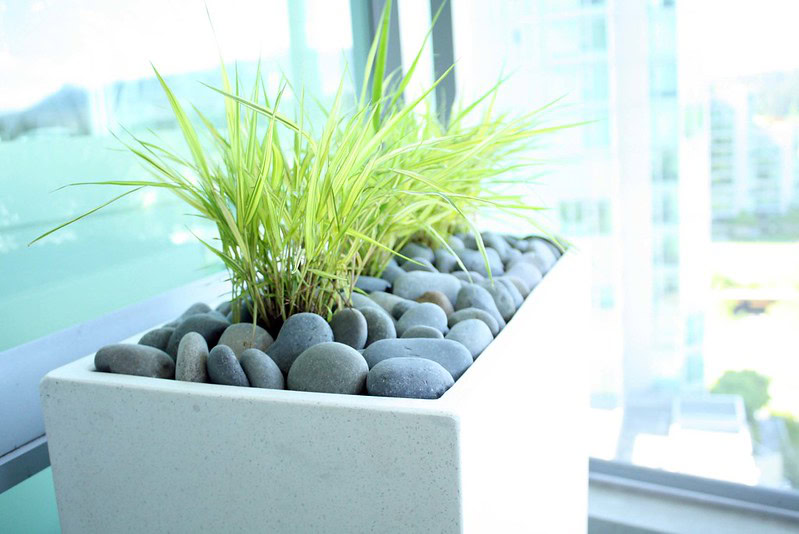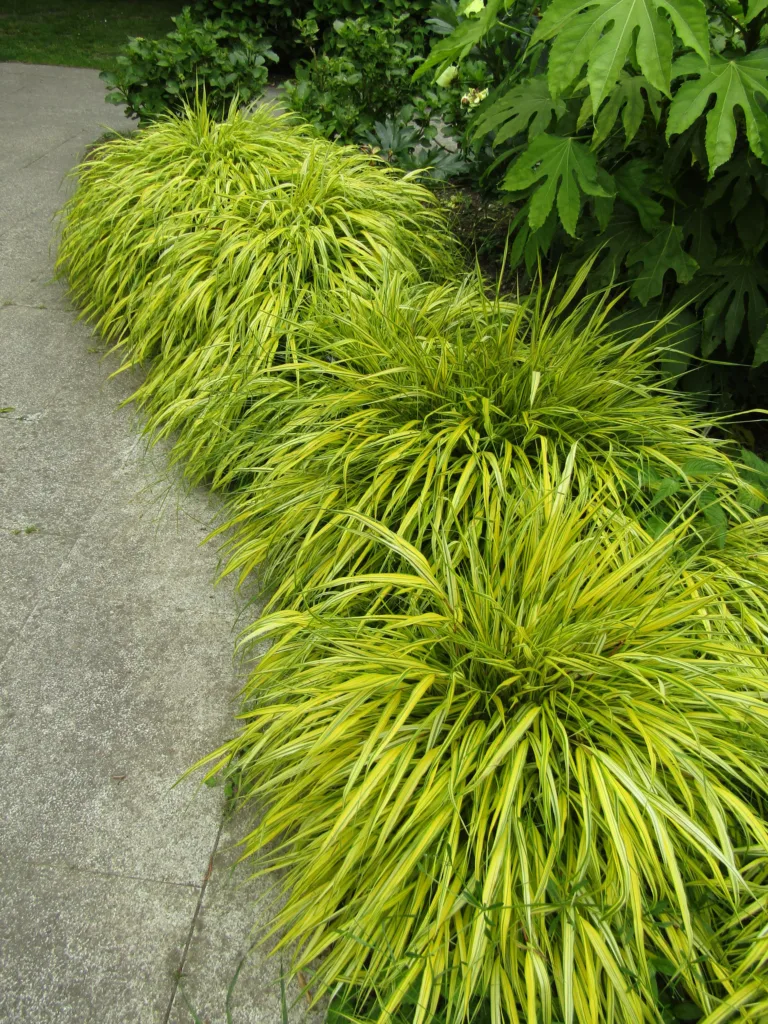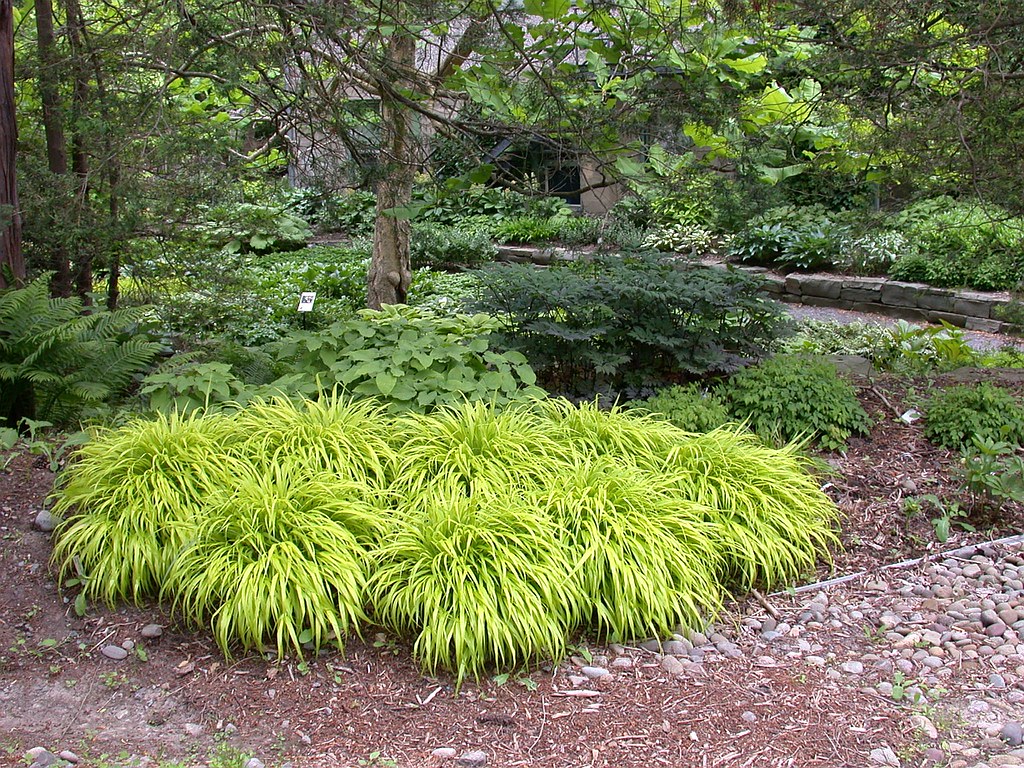Japanese forest grass, also known as Hakone grass or Hakonechloa macra, is a beautiful ornamental grass that adds a touch of elegance and tranquility to any garden or landscape.
Japanese Forest Grass With its vibrant green color, graceful arching habit, and ability to thrive in shade, this all-around grass has become a favorite among garden lovers.
Whether you are new to gardening or have years of experience, this comprehensive guide will provide you with all the information you need to successfully grow and care for Japanese forest grass.
What is Japanese Forest Grass
Before we delve into the specifics of growing and caring for Japanese forest grass, it is important to understand its unique characteristics.
Native to the mountains of Japan, this grass is well adapted to cooler climates and thrives in partial shade to full shade conditions.
It is often used as a ground cover or accent plant due to its low-growing habit, reaching a height of around 12 to 18 inches.
One of the standout features of Japanese forest grass is its distinct arching habit, with the leaves gracefully cascading down like a fountain.
The narrow, lance-shaped leaves can range in color from chartreuse to golden yellow, adding a pop of color and texture to shaded areas.
During the fall season, the foliage often transforms into stunning shades of orange, red, or copper, providing a stunning display of autumn colors.
| Category | Information |
|---|---|
| Family | Poaceae (Grass family) |
| Genus | Hakonechloa |
| Species | macra |
| Common Name | Japanese Forest Grass, Hakone Grass |
| Native to | Japan |
| Hardiness Zones | USDA Zones 5-9 |
| Mature Height | 12 to 18 inches (30 to 45 cm) |
| Mature Spread | 18 to 24 inches (45 to 60 cm) |
| Foliage Color | Green, Variegated (cultivars available) |
| Exposure | Partial to Full Shade |
| Soil Requirement | Moist, well-drained soil |
| Drought Tolerance | Moderate |
| Deer Resistance | Generally resistant |
| Growth Habit | Clump-forming, mounding |
| Bloom Time | Late summer to early fall |
| Flower Color | Inconspicuous, often tan or purplish |
| Uses | Ground cover, borders, woodland gardens |
| Maintenance | Low |

Choosing the Right Location
When it comes to growing Japanese forest grass, choosing the right location is crucial for its success. As mentioned earlier, this grass prefers partial to full shade, making it an excellent choice for areas that receive limited sunlight.
While it can tolerate some morning sun, it is best to avoid long periods of direct sunlight, especially during the hottest part of the day.
In terms of soil, Japanese forest grass prefers moist, well-draining soil that is rich in organic matter. Adding compost or well-rotted manure to the soil before planting will help improve its fertility and moisture retention.
It is important to note that Japanese forest grass does not tolerate dry or waterlogged conditions, so be sure to water it regularly to maintain adequate soil moisture.
Planting Japanese Forest Grass
Now that you have chosen the perfect location, it’s time to plant your Japanese forest grass. Follow these step-by-step instructions to ensure a successful planting:
- Start by preparing the soil. Remove any weeds or grass from the planting area and amend the soil with compost or well-rotted manure.
- Dig a hole that is slightly larger than the root ball of the plant.
- Gently remove the plant from its container and loosen the roots to promote better growth.
- Place the plant in the hole, ensuring that the crown (where the leaves join the roots) is level with the soil surface.
- Backfill the hole with soil, gently firming it around the roots to eliminate air pockets.
- Water the plant thoroughly to settle the soil and encourage root establishment.
Watering and Mulching of Japanese Forest Grass
Proper watering is essential for the health and vitality of Japanese forest grass. While it can tolerate some dry periods, it prefers consistently moist soil.
Aim to keep the soil evenly moist, but not waterlogged, throughout the growing season. During hot and dry periods, you may need to water more frequently.
To conserve soil moisture and suppress weed growth, consider applying a layer of organic mulch around the base of the plants.
This mulch layer will also help regulate soil temperature and protect the roots during colder months. Apply a 2 to 3-inch layer of mulch, such as shredded bark or wood chips, taking care to keep it a few inches away from the base of the grass to prevent crown rot.
Feeding and Fertilizing for Japanese Forest Grass
Japanese forest grass generally does not require heavy feeding or fertilization. However, a light application of balanced slow-release fertilizer in early spring can give it a boost of nutrients.
Alternatively, you can apply compost or well-rotted manure around the base of the grass to provide a natural source of nutrients.
Avoid over-fertilizing, as this can lead to excessive foliage growth, which may result in a weaker plant structure.
Japanese forest grass is admired for its delicate and graceful appearance, so it is important to strike the right balance when feeding the plant.
Pruning and Maintenance of Japanese Forest Grass
Japanese forest grass is a relatively low-maintenance plant, but it does benefit from some pruning and tidying up. Follow these guidelines to keep your grass looking its best:
- In early spring, before new growth emerges, remove any dead or damaged leaves by gently pulling them from the base of the plant.
- You can also trim back any leggy or overgrown stems to maintain a neat and compact appearance.
- To prevent the grass from spreading into unwanted areas, you may choose to install a barrier or edge around the planting bed.
- Divide overcrowded clumps every few years in early spring to rejuvenate the plant and promote healthy growth.

Common Pests and Diseases
While Japanese forest grass is generally pest and disease-resistant, there are a few common issues to be aware of:
- Slugs and snails: These slimy creatures can cause damage to the foliage, particularly in damp and shady areas. Use organic slug control methods or set up beer traps to deter them.
- Powdery mildew: In humid conditions, Japanese forest grass may be susceptible to powdery mildew, a fungal disease that appears as a white powdery coating on the leaves. To prevent this, ensure adequate air circulation and avoid overhead watering.
Types of Japanese Forest Grass
- Hakonechloa macra ‘Aureola’:
- Known for its striking golden-yellow variegation, ‘Aureola’ is one of the most popular varieties. The leaves have green and yellow stripes.
- Hakonechloa macra ‘All Gold’:
- This cultivar features solid golden-yellow foliage, creating a bright and vibrant appearance in shaded areas.
- Hakonechloa macra ‘Alboaurea’:
- Similar to ‘Aureola,’ ‘Alboaurea’ has green and yellow striped leaves. It adds a dynamic element to shaded gardens.
- Hakonechloa macra ‘Nicolas’:
- ‘Nicolas’ is known for its green foliage with red tips, providing an interesting color contrast.
- Hakonechloa macra ‘Beni-kaze’ (Red Wind):
- This cultivar has green leaves that turn red in the fall, creating a visually stunning display.
- Hakonechloa macra ‘Naomi’:
- ‘Naomi’ is valued for its compact size and gracefully arching leaves with a green and gold coloration.
- Hakonechloa macra ‘Stripe it Rich’:
- This variety has bold, cream-colored stripes running along the length of the green leaves, adding a distinctive pattern.
Conclusion
In conclusion, Japanese forest grass is a stunning and versatile plant that can thrive in shaded areas of your garden.
By choosing the right location, providing adequate moisture, and following the appropriate care guidelines, you can enjoy the beauty of this ornamental grass for years to come.
Whether you are looking to create a serene shade garden or add a touch of elegance to your landscape, Japanese forest grass is sure to impress with its graceful arching habit and vibrant foliage.
So go ahead, plant some Hakone grass, and watch your garden come alive with its beauty and charm. Happy gardening!
FAQs
Does Japanese Forest Grass spread?
Japanese Forest Grass tends to form clumps and slowly spreads through rhizomes. While it can spread, it’s not considered invasive.
Does Japanese Forest Grass like sun?
Japanese Forest Grass prefers partial to full shade. It thrives in cool, moist conditions and is not well-suited for prolonged exposure to direct sunlight.
What is Japanese Forest Grass used for?
Japanese Forest Grass is commonly used in gardens as a ground cover, especially in shaded or woodland areas. Its graceful, arching blades add texture, and the plant is valued for its ornamental qualities.
Is Japanese Forest Grass a bamboo?
No, Japanese Forest Grass (Hakonechloa macra) is not a bamboo. While they may share a similar appearance in terms of arching foliage, they belong to different plant families.
Why is my Japanese Forest Grass dying?
Several factors could contribute to the decline of Japanese Forest Grass, including inadequate moisture, poor soil conditions, or excessive sunlight. Ensure it’s planted in well-draining soil, provide sufficient water, and make sure it’s not exposed to intense sunlight if it prefers shade.

